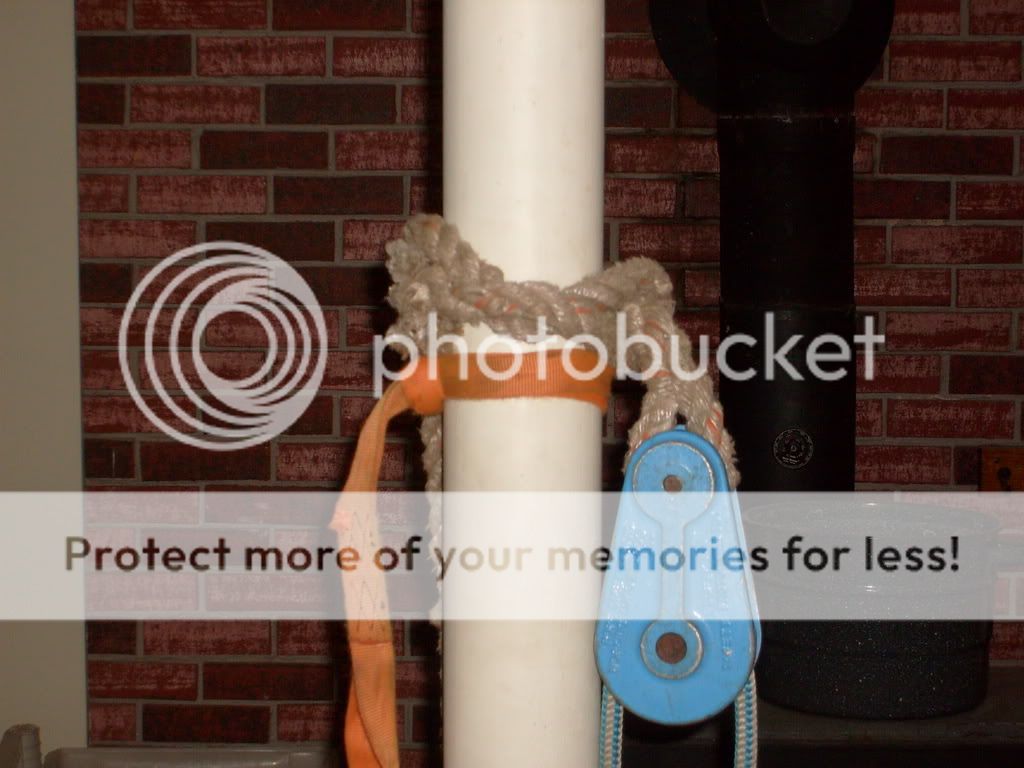Slvrmple72
Addicted to ArboristSite
KEEP YOUR LINES OUT OF AND ABOVE THE RIGGING!!!!
If you cannot tie in at a suitable point adjacent to the limb/spare you are working on, say another part of the tree then you need to tie in above your block and rigging line. If the rigging line fails it can snag your line and pull you out of the tree. If your block anchor fails it can snag your line and pull you out of the tree. The friction of the rigging line with a lot of weight on it can cut through your line ( just one more reason for that secondary attachment! )and send you plummeting out of the tree. I have seen the climbing line sucked into the rigging, jammened into the pulley/block with a big chunk hanging and swinging ( climber swinging and swearing! ) I can hear some of you whining now: " What about my anchor coming off the top of the cut spar when its bouncing me around!?" Wrap your anchor, lean back and lock in, hell you can even cut a notch to set your line into if you cannot set up at a suitable part of the tree( branch union, swell, etc )
AND MAKE SURE YOU HAVE EVALUATED THE SPAR FOR DEFECTS/WEAK POINTS BEFORE YOU START DROPPING THE TOP!!! Nothing worse than letting the top rip just to have it fail the spar at a point below you!!!
If you cannot tie in at a suitable point adjacent to the limb/spare you are working on, say another part of the tree then you need to tie in above your block and rigging line. If the rigging line fails it can snag your line and pull you out of the tree. If your block anchor fails it can snag your line and pull you out of the tree. The friction of the rigging line with a lot of weight on it can cut through your line ( just one more reason for that secondary attachment! )and send you plummeting out of the tree. I have seen the climbing line sucked into the rigging, jammened into the pulley/block with a big chunk hanging and swinging ( climber swinging and swearing! ) I can hear some of you whining now: " What about my anchor coming off the top of the cut spar when its bouncing me around!?" Wrap your anchor, lean back and lock in, hell you can even cut a notch to set your line into if you cannot set up at a suitable part of the tree( branch union, swell, etc )
AND MAKE SURE YOU HAVE EVALUATED THE SPAR FOR DEFECTS/WEAK POINTS BEFORE YOU START DROPPING THE TOP!!! Nothing worse than letting the top rip just to have it fail the spar at a point below you!!!
























































